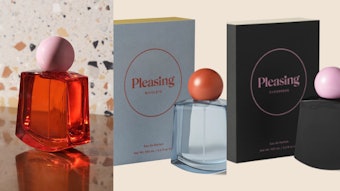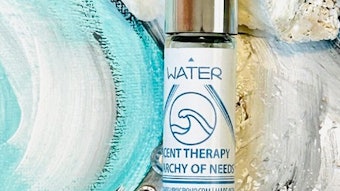According to Euromonitor International’s data, fragrance was the third most dynamic cosmetics and toiletries sector in 2006, behind sun and baby care, and posted an increase of 7% to reach $30.5 billion. This is a much more positive picture than was being painted this time last year when fragrances ranked sixth in terms of growth, having been beaten out by emerging categories such as men’s grooming products, sun care and skin care, where value-adding had been aggressive. Traditionally a crowded, highly competitive sector, fragrance sales in 2006 were propelled by demand in emerging markets. The category’s future prospects are also looking strong, with sales set to exceed $35 billion, and manufacturers are employing innovative tactics to fight back against reported “meltdowns” in developed regions.
Growth in Emerging Markets
The upturn in the fragrance sector is largely due to growth in Latin America and Eastern Europe, where recent economic prosperity allows consumers to spend more on beauty nonessentials. Fragrances rose by 21% in Latin America and 13% in Eastern Europe in 2006—a combined increase of $1.3 billion, more than double the total value contributed by the remaining regions, including the two largest—Western Europe and North America.
Both Latin America and Eastern Europe have a strong tradition of wearing scents—particularly the former, where usage even extends to babies and young children. Here, mass fragrances are the engine of growth, as consumers put scent above image and are more price conscious than in other markets. Nevertheless, companies are working to increase prices, and value growth far outstrips that of volume in both the mass and premium segments.
Innovation by the domestic direct sellers is a major thrust behind growth, as do fragrances that draw on locally sourced ingredients to create high quality, upper-mass scents on a par with international labels. In 2006, direct sales remained the dominant retail channel for fragrances, accounting for 60% of sector value.In Eastern Europe, mass fragrances also account for the lion’s share of value. However, Euromonitor International data shows that premium fragrances saw the faster growth in 2006, increasing by over 14% in value terms to account for a third of the $3.1 billion sector. Dynamism in the segment is being driven by improved distribution through chained specialist outlets. Value growth was, however, inhibited by obstructive new restraints on the sale of ethanol-based products in Russia, the region’s largest market. The law was eventually amended to exclude fragrances and other beauty products containing alcohol, and the total impact on the sector is unknown, but 2006 growth did mark a slowdown on the previous year.
Mature Markets Expand
Performance in 2006 was not solely due to new wealth in emerging markets; sector players have also been striving to reignite growth in the developed regions. Together, Western Europe and North America account for nearly 60% of fragrance value sales, and both regions are marked by high launch rates, short shelf lives for new scents and competitive, fragmented markets. Despite these difficulties, companies are beginning to succeed in lifting value growth, and both markets saw gains of more than 2% in 2006.
Premium fragrances are driving growth in both Western Europe and North America, but the lower end of the segment and discounting are driving dynamism. In the U.S., for example, manufacturers are exploiting the migration of consumers toward mass retailers with innovative strategies to suit this channel.
Tapping into Wider Trends
Increasingly, the industry is using color trends as inspiration for new scents. U.S.-based Arylessence works with color forecasters to create a palette that conveys an identified trend, which it then translates into notes and accords. The company was inspired, for example, by a palette that includes coral and deep blue (based on a lifestyle trend Arylessence termed “Exotica,” epitomizing freedom, escapism and adventure) to create fragrance combinations of green curry and mango, and Tahitian sugarcane and papaya. Arylessence also illustrates how fragrance companies are increasingly tracking food fads as predictors of future scent trends.
Limited editions are another way for fragrances to stay fresh and to cut across the constant hype in such a launch-heavy sector to stand out from the other product launches. They often tap into a high profile event of the moment to benefit from the publicity surrounding it, or mark the coming of a new season or holiday. Thierry Mugler, for example, introduced a limited edition box set of fragrances linked with the 2006 film Perfume: The Story of a Murderer.
Speciality fragrances are emerging as a fast-growing niche, and artisanal fragrances are helping to revive the industry’s status as an art form. It also helps to educate consumers how ingredients react with the body’s own perfume to smell differently on different people. What all this means for the industry is a more discerning consumer, a reinvigoration of the premium fragrances segment and a willingness to trade up for quality.
Future Focus on the East
The outlook is rosy for fragrances, which is forecast to keep pace with the overall cosmetics and toiletries market at a steady 3% yearly through 2011. This demonstrates that efforts to generate greater demand worldwide are paying off. Yet, there is still more that manufacturers could do to lift sales, primarily by attracting consumers in the little-penetrated Asia-Pacific market.
Asia-Pacific is the smallest regional market for fragrances, aside from Australasia, accounting for less than 7% of the global sector in 2006. Economic conditions contribute, in part, to the region’s low consumption, although it is primarily due to cultural norms that associate heavy scents with the masking of body odor. With the exception of highly Westernized societies (such as Hong Kong and Singapore), per capita usage across the region is below the global average, even in very developed markets such as Japan.
In China and India, sales are further hindered by black market and counterfeit goods, and, in the latter instance, by the enduring popularity of traditional perfumes. Euromonitor International predicts that the Chinese market will be key to unlocking growth in Asia-Pacific, as disposable incomes rise and the retail environment modernizes. The Chinese government is also working to tackle the counterfeiting problem and prestige brands stand to gain the most in a market that embraces conspicuous consumption.
Back to the October issue.










